VJM01 makes track debut in Barcelona
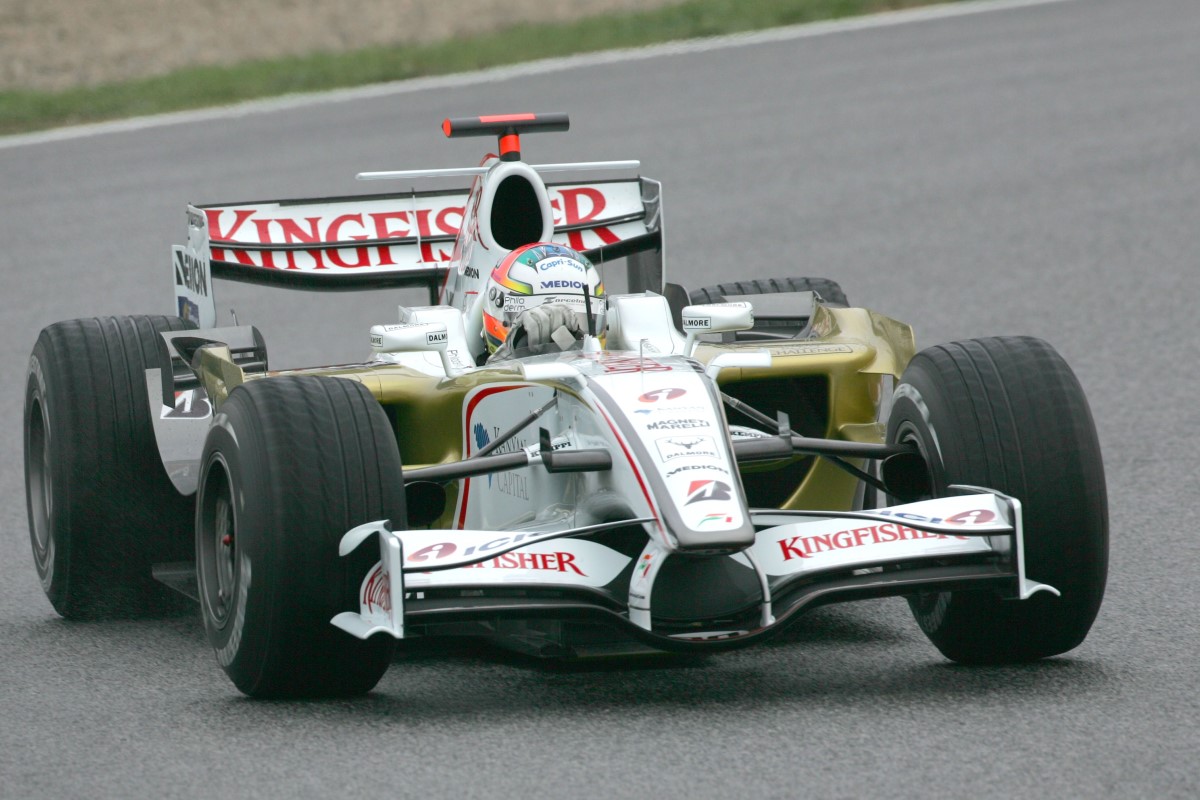 |
| VJM01 |
Today in Barcelona, the Force India Formula One Team's new 2008 FIA Formula One World Championship challenger, the VJM01, made its track debut.
The VJM01, a name in tribute to the team's owners, Dr. Vijay Mallya and Jan and Michiel Mol, is based on the B-spec F8-VII that Force India's predecessor, the Spyker Formula One Team, launched at the 2007 Italian Grand Prix. Developed throughout the year at its UK base and wind tunnels in Brackley, UK, and Aerolab, Italy, the B-spec represented a significant step forward for the small Silverstone-based team, with optimized mechanical and aerodynamic packages.
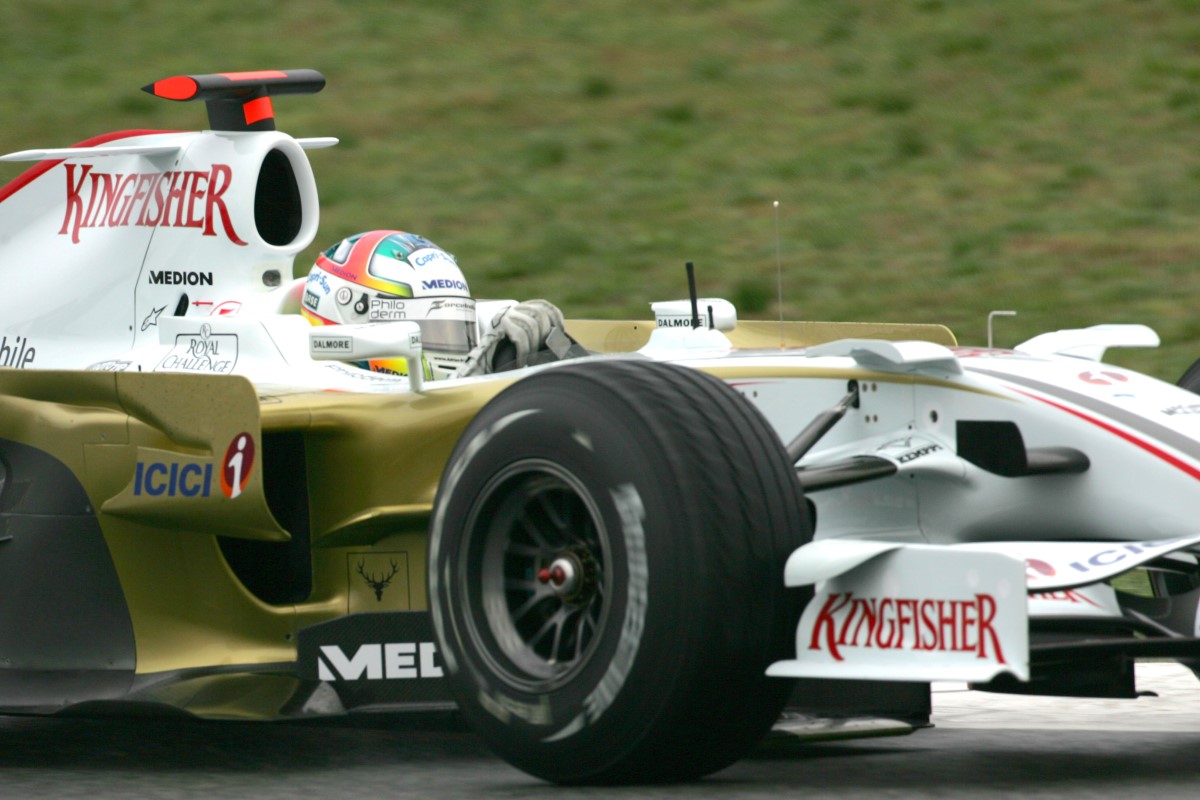 |
| VJM01 |
This year's challenger is an evolution of this development, as Force India chief technical officer, Mike Gascoyne explains: 'The 2008 car is based on the B-spec car we introduced at the end of last year. We have carried the chassis over from 2007 to 2008, but the car we run at the Australian Grand Prix will have numerous aerodynamic and mechanical updates, which we will be testing from 25 – 27 February at Barcelona before the first race.
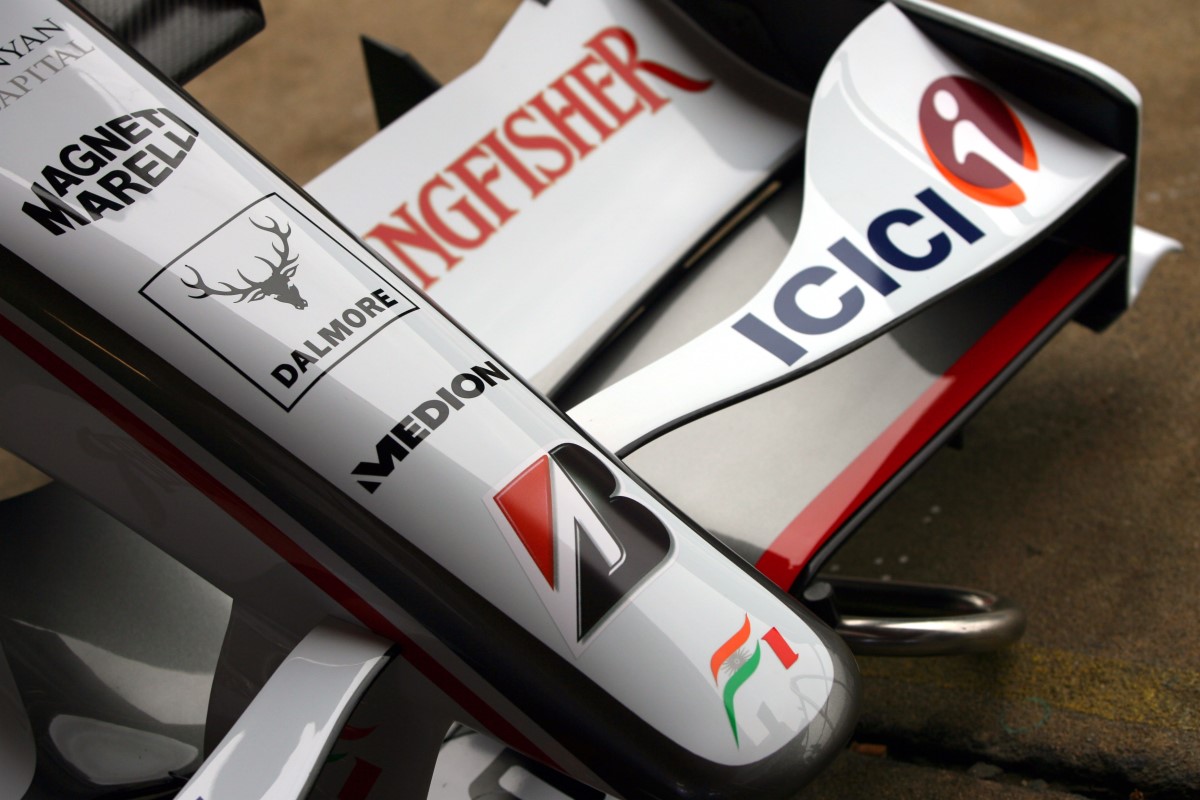 |
| VJM01 nose |
'Aerodynamically, there has been a complete rework of the car. With our two wind tunnels in Brackley and Italy now operating full time, we have been able to make a lot of progress in the aero department, so almost every aero feature on the car will have been revised. The car we race with in Melbourne however will just be the start of a continuous cycle of aerodynamic improvement over the season.'
Mechanically, as well as aerodynamically, the chassis has also been updated. Last season the rear suspension geometry was significantly revised, with the rotary dampers replaced with linear ones, and a new gearbox design targeted at complying with the new 2008 gearbox rules where each 'box must be used for four races. The engine installation was also reviewed to make cooling resources lighter, more compact and much more efficient.
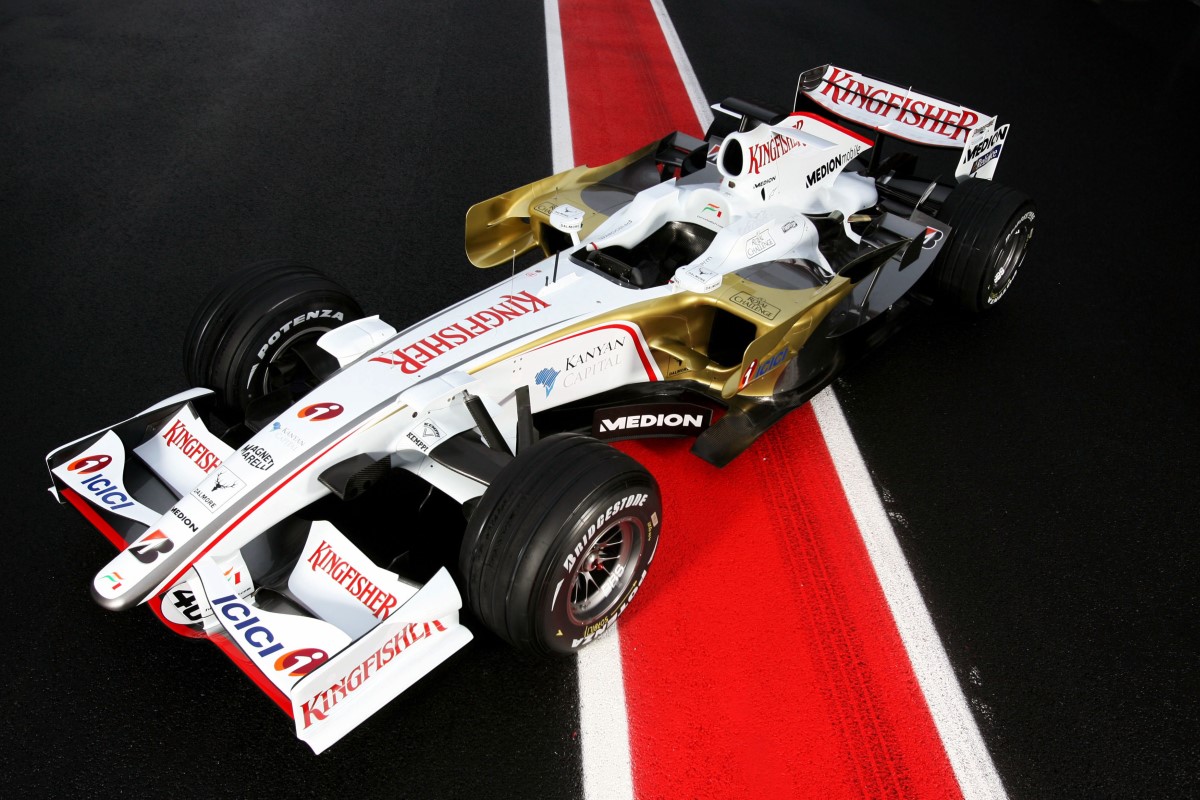 |
| VJM01 |
Gascoyne explains the VJM01 will be yet another step forward. 'We are looking at significant improvements in the rear suspension and also some systems to improve reliability from last year. The B-spec gearbox we introduced was always aimed at four races, and obviously we had the benefit of testing it at the final races of the year. We've now run many miles on that gearbox and we are very confident that we are very reliable in this area for 2008.
'We have also carried over the engine installation and radiator package, but again have made detailed improvements and incorporated some lighter parts. In some respects we have been able to make bigger improvements by changing fewer parts on the car, which has enabled us to focus more resources on key areas.'
 |
| VJM01 front wing |
The development in these key areas has largely been facilitated by a significant restructure of Force India's technical department at the end of 2007. Mark Smith, a veteran of Jordan Grand Prix, Renault and Red Bull, joined the team as design director working under the direction of Gascoyne and alongside technical director James Key. In this role, Smith took responsibility for the day to day running of the drawing office and all race car design, freeing Key up to focus on research and development, vehicle science and development projects for the 2009 and subsequent seasons' cars.
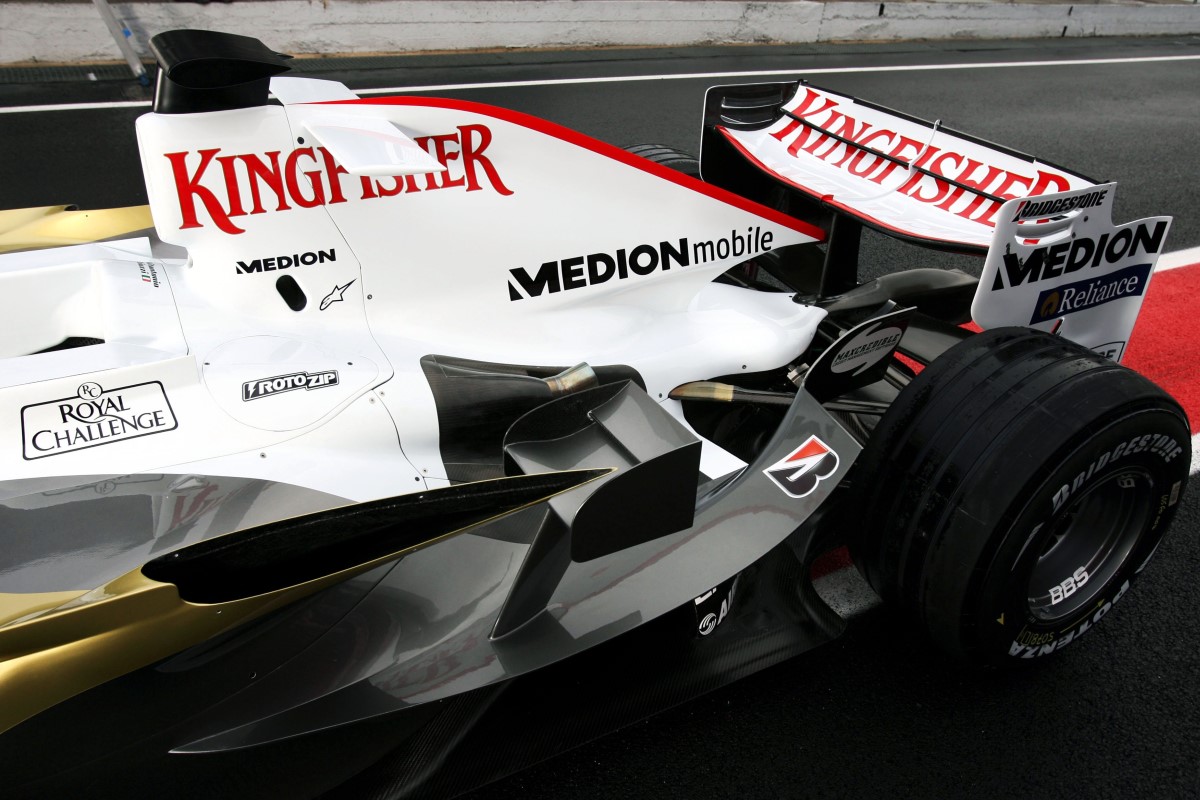 |
| VJM01 |
'Obviously as Force India, we have expanded our workforce,' adds Gascoyne, 'and we have had significant new staff come on board in Mark Smith and also Ian Hall, who worked with the team in its Jordan days. Ian will be a project leader for the 2009 car, which means we have also been able to promote Akio Haga, who was formerly head of mechanical design, to the position of project leader for the 2008 car. It's given us a lot more structure, which makes us more dynamic and prepared to action development plans. I believe that with Mark and James at a senior level, a strong support staff, additional resources and experience, we will see a strong impact on the 2008 car and beyond.'
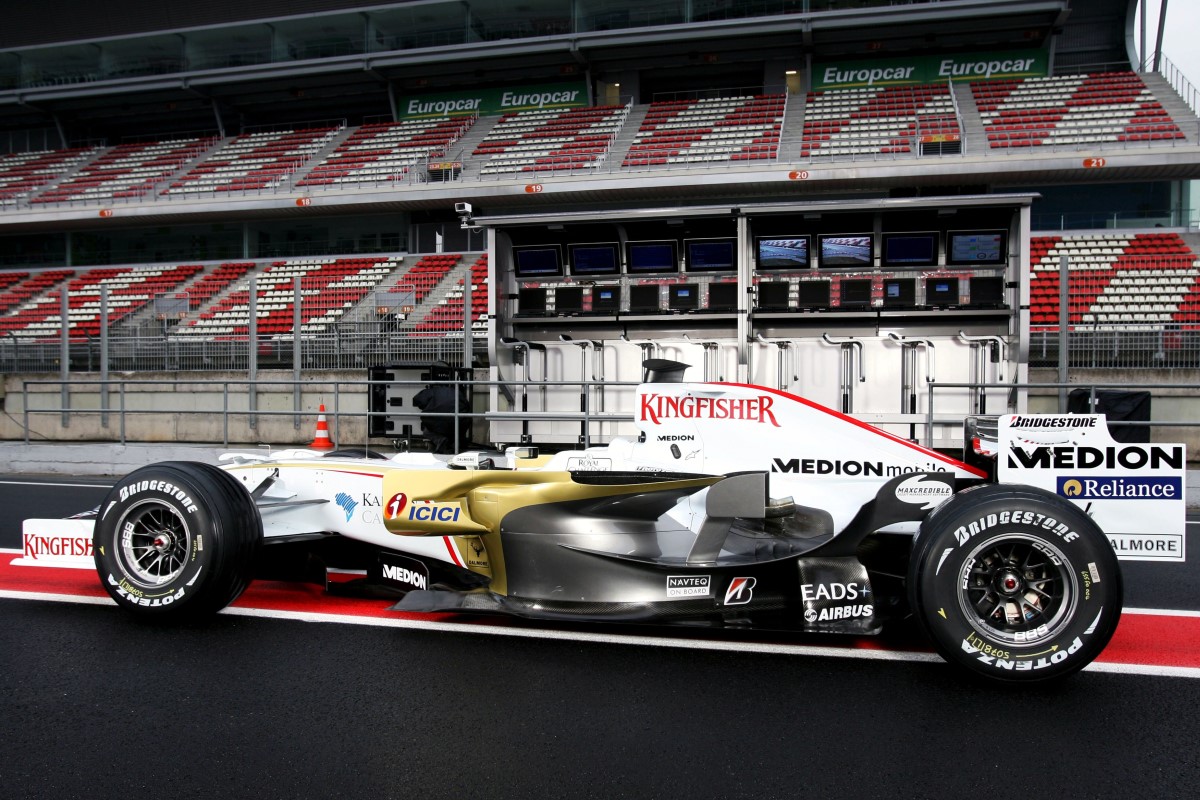 |
| VJM01 |
The new VJM01 will test for the first time today at the Barcelona test, just two weeks before the first race of the season. Gascoyne does not believe this will be a disadvantage, as the team has completed some strong work over the winter. 'We've been testing new parts and looking at reliability,' Gascoyne continues. 'It's just one update we have coming along for the last test and it will be mostly aerodynamic and will have no real impact on reliability. I am not worried that we are just testing them for the first time a very short while before the season as this has been done to give us the maximum time possible in the wind tunnel.
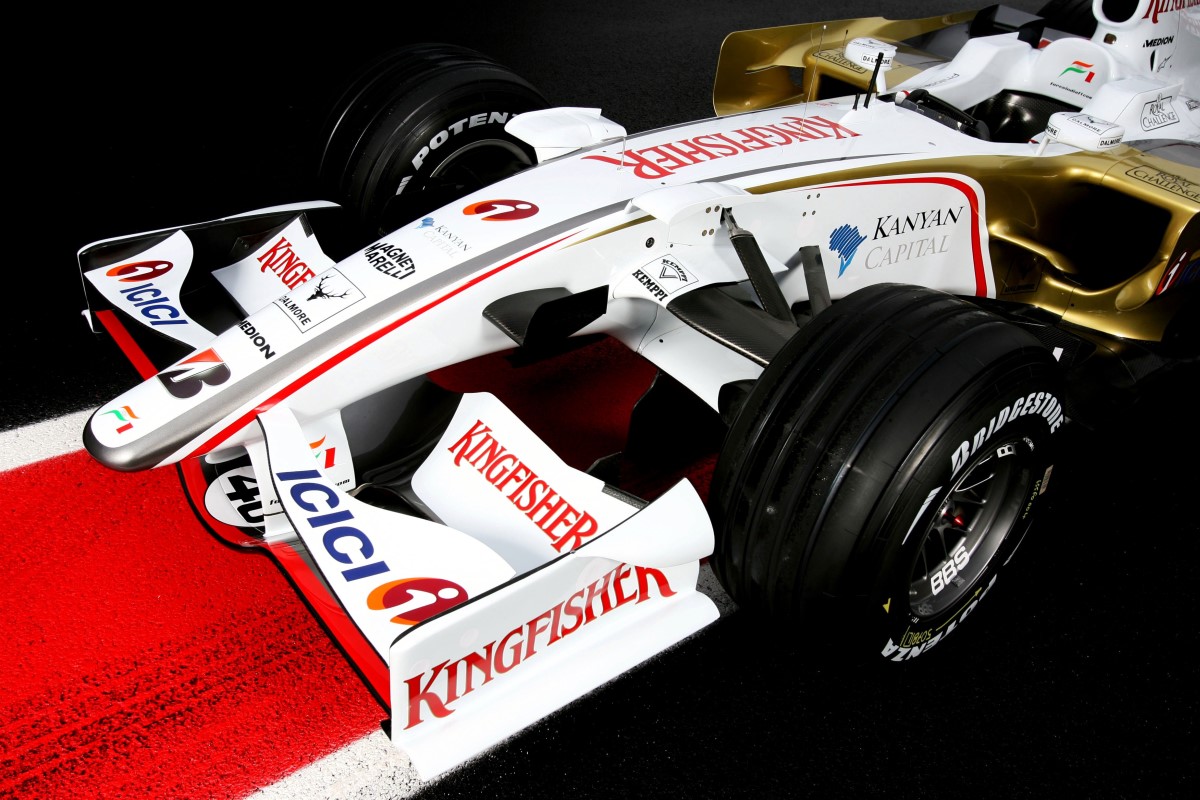 |
| VJM01 |
'Over the winter we have really been working with the new drivers, and we've certainly shown a new level of competitiveness, which is something that will benefit us going forward. There has been a lot of work going on in the background and we should look to go to Australia and be very reliable, especially in the first few races and pick up whatever we can.
'Last year was very frustrating, but now we are in a position to move forward from a much more competitive baseline. Certainly you will see that with the new development we should look to racing properly with the midfield as soon as possible.'
